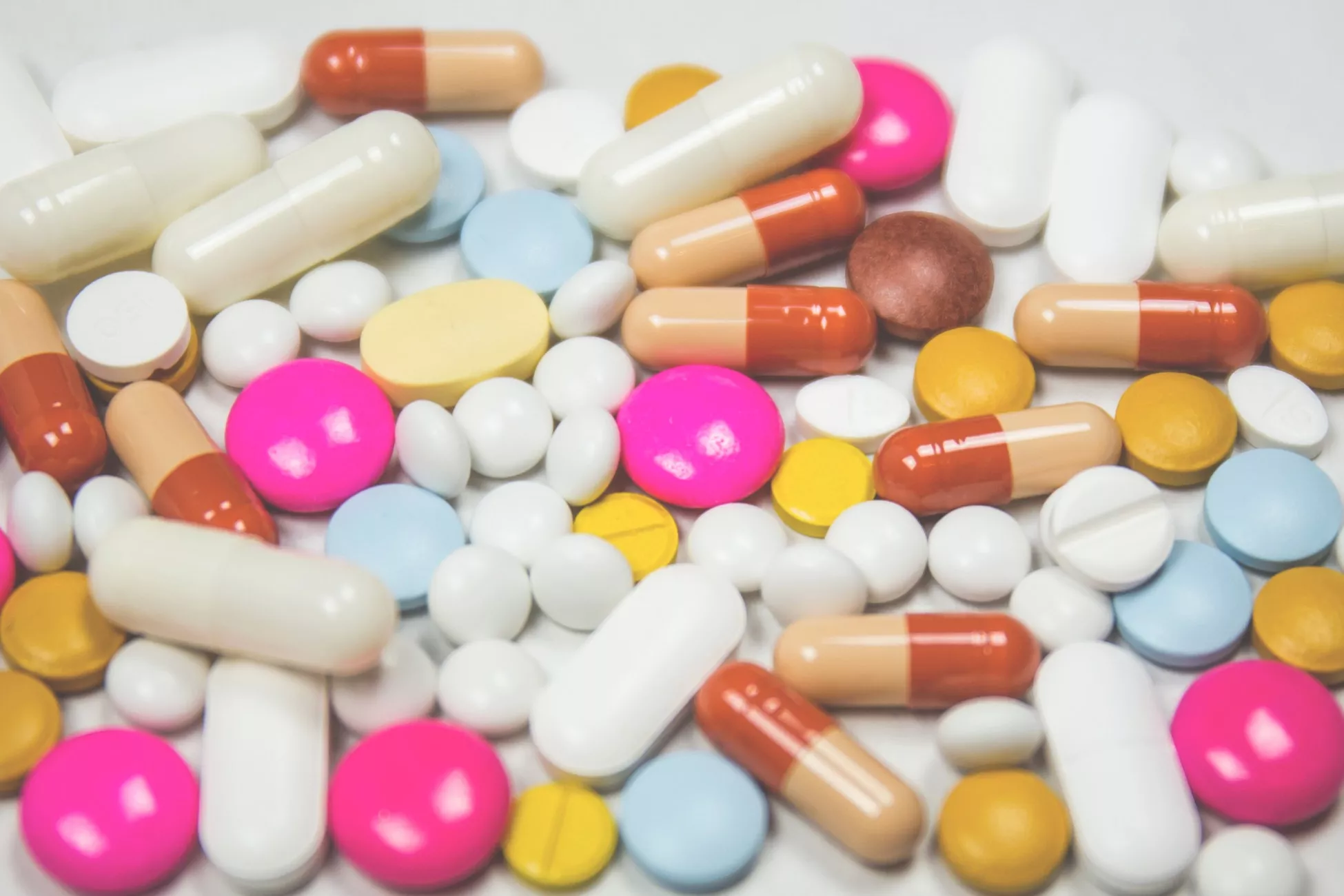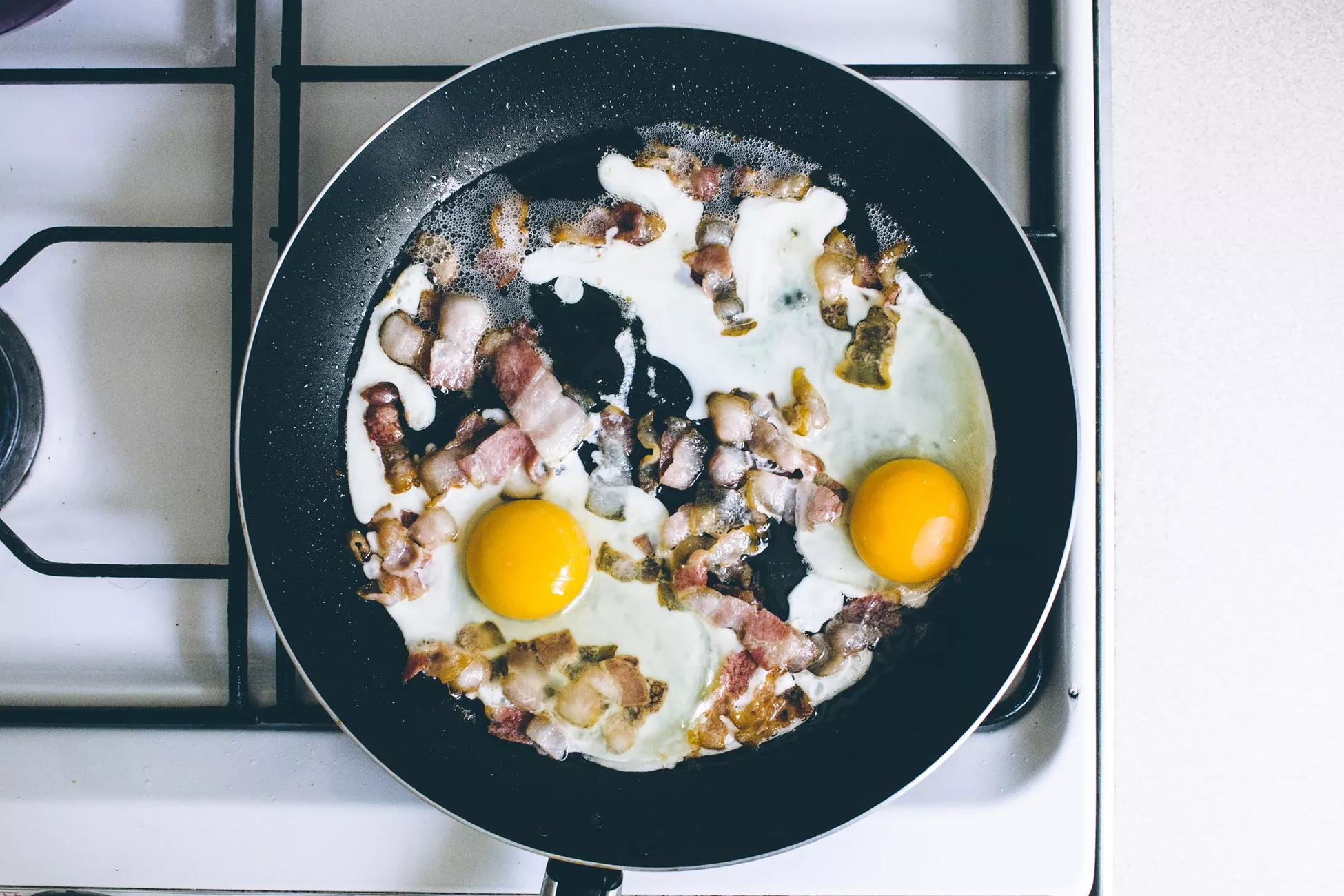Androgen Hacking 101: How To Increase Testosterone Naturally

I know what you’re thinking:
Most men are skeptical of the “testosterone booster” market…
…and for good reason.
We hear the ads on the radio and TV every day.
“For just 3 easy payments of $29.95, you can boost your T naturally and be a god in the sack!”
🙄 Please.
Rest assured, this article has nothing to do with flashy branding or pretty blue pills that will supposedly make your junk bigger.
Today you’re going to learn the fundamentals of androgen hacking, aka boosting testosterone levels without needing Testosterone Replacement Therapy (TRT).
These 7 strategies should be at the core arsenal of anyone trying to boost androgen levels.
What are these basic building blocks of a natural androgen boosting plan?
In no particular order:
- Get your body fat percentage down
- Correct vitamin/mineral deficiencies
- Lift heavy weight
- Optimize sleep
- Fix any major dietary issues
- Minimize stress
- Avoid xenoestrogens
If any of these 7 things are out of whack, your levels will be sub-par at best.
Why?
Before we dig in deep and see what the research says about each of these, let me give you a basic definition.
What Is Androgen Hacking?
A simple definition:
‘Androgen hacking’ is the process of systematically increasing testosterone levels and optimizing men’s health.
Biohacking testosterone can be accomplished in 5 easy steps:
- Get some baseline lab work.
- Implement the 7 ‘heavy hitter’ proven strategies talked about in this guide.
- Retest labs. This is your new baseline.
- Tweek and optimize.
- Repeat steps 3&4 endlessly.
Let’s jump right in:
1. Get Your Body Fat Percentage Down

Does weight loss increase androgens?
Well, it depends.
If your body fat percentage is significantly higher than 14%, then absolutely, yes.
For example:
A study done on 900 prediabetic men found almost a 50% drop in low T prevalence after losing an average of about 17 pounds (7.8 kilograms) over one year.
We also know that not only do obese men have lower levels of testosterone than guys with a “normal” body fat percentage. We also know that the opposite is true. Skinny guys have significantly higher levels than big guys.
There are lots of reasons why this is the case. One interesting fact is that the more fat you have on your body, the more testosterone gets converted into estrogen.
Keep in mind that there is a tipping point for how low your body fat percentage should be.
An optimal body fat percentage for optimal testosterone levels is somewhere around 9-14%. We know this by observing natural bodybuilders and how their hormones recover from their competitions (when body fat percent is crazy low).
This study concluded that the reason for this is because your reproductive function slows down at those low body fat levels.
Your body goes into survival mode at this point. There is no time for it to be optimizing anything other than essential bodily functions.
The fact of the matter is that the more notches needed in your belt buckle, the lower your testosterone levels will be.
Why is this?
More fat has been proven to correlate with the increased production of aromatase.
What does aromatase do?
One of the primary functions of aromatase is to convert testosterone into estrogen. By having a higher body fat percentage, you are literally turning your hormone profile into one representing that of a female.
So how do you lose weight?
Much has been written on this topic, so I won’t go into crazy detail here.
Here are the basics:
Ignore all the trendy fad diets and useless diet pills. It sounds totally unsexy, but losing weight all comes down to burning more energy (aka calories) than you consume.
Weight loss comes down to energy balance.
However, our goal is to lose fat and gain muscle at the same time.
In this case, we need to be a bit more specific with managing our macros. In the diet section below, I will teach the perfect macronutrient profile for:
- Losing Fat
- Gaining muscle
- Boosting T
The androgen boosting macro profile outlined below remains the same for weight loss, gain, and maintenance.
After having said all that, there is one trendy ‘diet’ that has been big on the scene recently. The only reason I’m bringing it up is that it has some sound science behind it that supports a boost in T levels.
This ‘diet’ isn’t really a diet, per se.
What am I referencing?
Intermittent Fasting
I consider Intermittent fasting more of a lifestyle than I do a diet.
How does it work?
All you have to do is skip breakfast a couple of times a week. Eat your last meal of the day at 7 pm. Go to bed and then skip breakfast the next day. Don’t eat that next day until at least 11 am. By doing this, you will effectively be fasting for 16 hours.
2. Correct Vitamin/Mineral Deficiencies

The odds are that you currently have some sort of vitamin or mineral deficiency.
This 2014 study, done in the states found:
In large proportions of the population, micronutrient sufficiency is currently not achieved through food solutions for several essential vitamins and minerals.
Testosterone synthesis is a very complicated process. It involves literally almost every vitamin, mineral, and micro-nutrient you can think of.
There are 4 vitamins and minerals that seem to have the most significant impact on your T levels.
Zinc
It has been well established that zinc has a positive correlation with serum testosterone levels:
Serum testosterone concentrations were significantly correlated with cellular zinc concentrations…
Another study found that not only does zinc increase testosterone levels, it also increased sperm count.
It also seems to counter the reduction in testosterone that is typically seen with high-intensity training programs (aka overtraining).
Boron
Boron does increase total testosterone levels, but it does increase free testosterone and DHT. After just 7 days of supplementation of Boron, free testosterone levels increase by 28.3%.
Supplement with about 10 mg of Boron each day.
Vitamin D

Vitamin D isn’t really a vitamin. It’s actually a prohormone. Supplementing with vitamin D alone has been proven to increase testosterone by 25% in regular health men.
Another study found that by taking 3,300 IU of vitamin D each day over one year, you can boost your T levels by 20%.
Supplement with 3000 - 5000 IU of vitamin D each day.
3. Exercise - Lift Heavy Weights (And Do Some HIIT)
This is one of the most tried and true ways to increase testosterone levels naturally.
Here are some basic guidelines when creating an exercise program focused on boosting testosterone:
-
The more muscle used in a given exercise, the better. The squat, deadlift, bench press, and military press should be at the heart of any program you come up with. What we know is that more muscle equals more testosterone. When adding accessory exercises, use this same concept. For example, you should always pick dips over tricep pulldowns and chin-ups over barbell curls.
-
Use progressive overload to lift heavier and heavier weights each time you go to the gym. More weight on the bar leads to more muscle. More muscle leads to more testosterone.
-
Don’t overtrain. Workout sessions don’t need to be marathons. Get in, do 2-4 big lifts and get out. You shouldn’t ever be at the gym for more than 90 mins or so at the most. Also, 3-4 times a week with rest days in between should be considered optimal. Watch for any signs of overtraining. Examples include trouble sleeping, a decrease in the amount of weight you’re able to lift, and excessive soreness. Overtraining leads to increases in cortisol, which is a testosterone killer (see the stress section below)
-
You can do cardio, but do the right kind of cardio. High-intensity interval training (HIIT) cardio is where it’s at when it comes to boosting testosterone levels. Sprints are a great example of this. Avoid doing any long sustained cardio like the plague.
The Androgen Hacker Exercise Program For Maximizing Testosterone Levels

This is the T boosting exercise program I used to double my testosterone.
It’s super simple:
I lift weights on 3 nonconsecutive days and use a 5x5 program that focuses on big compound exercises. I also complete 30 _ 50-yard sprints_ on 2 other days of the week.
That’s it.
Each weight lifting session takes me 60 to 90 minutes.
Here is the program:
-
Day 1: Back and Biceps
- Deadlift
- Rows
- Chin Ups
- Shrugs
- Barbell Curls 3x8 (optional)
-
Day 2: Sprints
- 30x 50-yard sprints. Do a sprint and walk back to the starting line. Rinse and repeat until complete.
- 30x 50-yard sprints. Do a sprint and walk back to the starting line. Rinse and repeat until complete.
-
Day 3: Chest and Triceps
- Bench Press
- Incline Bench Press
- Dips
- Skull Crushers 3x8 (optional)
-
Day 4: Rest Day
- Take the day off. You are going to need it for tomorrow.
- Take the day off. You are going to need it for tomorrow.
- Day 5: Legs and Shoulders
- Squat
- Military Press
- Leg Press
- Lateral Shoulder Raise
- Rear Delt Raise
-
Day 6: Sprints
- 30x 50-yard sprints again.
- 30x 50-yard sprints again.
- Day 7: Rest Day
Simple program, but it gets hard quick.
Here’s why:
Progressive Overload and Linear Progression
It’s important that you are lifting heavier and heavier weights each and every time you go to the gym.
For each exercise, start with a relatively low weight. Pick a weight that you’re comfortable with. Do your workout, and next week when you do that workout again, add more weight to the bar.
How much weight should you add?
It doesn’t matter - so long as it’s more.
As a rule of thumb, start low and go slow is the motto here.
At first, you’re going to be able to add significant poundage to the bar. When this is the situation, I recommend only going up by 5 lbs. You want to milk linear progression for as long as you can. Eventually, you’re going to reach a point where you won’t be able to add weight to the bar. At this point, I recommend looking into buying fractional plates. You can use these small weights to add as little as 0.5 lbs to the bar (total).
Here are some common questions about the androgen hacker program:
How many sets and reps?
With the exception of barbell curls and skull crushers, you will be doing 5 sets with 5 reps each.
Skull crushers and barbell curls are totally optional. If you do decide to do these exercises, you should do 3 sets with 8 reps each.
Do I Need To Warm Up?
Yes.
Four exercises require warm-up:
- Squat
- Deadlift
- Bench Press
- Over Head Press
You should be doing 3 warm-up sets for each of these exercises. Weights are determined based on percentages of working weight (i.e., the amount of weight you’re doing 5 sets of 5 reps with).
It looks like this:
- 1st warm-up set: Do 8 reps at 50% of your working weight
- 2nd: Do 6 reps at 70%
- 3rd: Do 3 reps as 90%
Rest time between warm-up sets should be only as long as it takes you to change the bar’s plates.
Rest Periods Between Sets
The rest time between sets should be 3 minutes OR as long as it takes you to recover. ‘Recover’ just means allowing enough time for your heart rate and respiratory rate to come back down to baseline.
4. Optimize Sleep

Each hour of sleep equals a 15% increase or decrease in your testosterone levels the next day?
Crazy, I know.
It’s been proven time and time again. Here’s another example:
“Association between sleep and morning testosterone levels in older men.”
They compared the testosterone levels in older men who got 4 hours of sleep vs. men who got 8 hours of sleep each night.
Guess what they found?
- The 4-hour group - Their T levels averages about 200 to 300 ng/dl
- The 8-hour group, on the other hand, were closer to 500 to 700 ng/dl
Getting enough quality sleep alone could mean the difference between being successful naturally versus needing to be prescribed TRT.
Here is a list of 8 simple tips for optimizing sleep:
- Exercise in the morning
- Don’t consume caffeine later than noon
- Keep the temperature between 63 and 67 degrees Fahrenheit
- Wear earplugs
- Use blackout blinds
- Use a blue light filter on your computer and phone after the sun goes down
- Keep a regular sleep schedule
- Don’t drink any fluids 2 hours before bedtime
5. Fix Any Major Dietary Issues
There are two key points here:
- Optimizing your macronutrients.
- Optimizing the amount of food your eating.
Let’s take a closer look at each of these.
Macronutrients
Fat is the most important macronutrient when it comes to T production.

Ideally, you want about 30% of your diet coming from fat.
This is because testosterone literally is created from fat. Cholesterol specifically is the most essential nutrient for you to be consuming if you’re trying to boost testosterone.
Plain and simple:
Research has found that a higher fat intake leads to higher testosterone levels.
Keep in mind, testosterone does not dosed dependently increase with an increase in fat intake.
There is a tipping point or ‘point of diminishing returns’. This is because the other macros are also essential.
Carbohydrates do seem to correlate in a dose dependent fashion with increases in testosterone.
Say what?
Ignore all the hype in the media saying carbs are bad for you. Not when it comes to testosterone. You want about 50% of your diet to come from carbohydrates.
That being said, it’s important to avoid simple sugars or highly processed carbohydrates.
Why?
Well, simple sugars spike insulin, and these spikes can lead to insulin resistance over time. Insulin resistance has been shown to reduce testosterone levels. Even more impressive, an acute spike in insulin has been proven to directly suppress T levels.
As it turns out,Protein is much less critical for testosterone than you might think.

Researchers have proven that there is a negative correlation (after a certain point) between an increase in protein and testosterone levels. This is primarily related to the reduction in carbohydrates (and healthy fats) that must take place when you assume an equal number of total calories.
Still skeptical of a lower protein, higher carb diet? Check this out:
As protein intake goes up, so does SHBG. That means lower levels of free testosterone circulating in your body.
Dietary protein should make up the remaining 20% of your diet. 20% is more than enough.
Calories
Whether you are trying to lose weight, maintain, or gain weight, there is an optimal approach to maintaining hormone balance as a male.
You can lose weight at a ~15% calorie deficit without having any kind of disruption in testosterone levels.
Maintaining your weight will also not affect T levels, but a slight calorie surplus will.
Eating in a calorie surplus leads to higher testosterone levels than eating at maintenance or in a deficit. If your body fat percentage can handle it, it would be ideal to eat more than maintenance.
Actionable Takeaway: Breakdown your macros into 50% carbs, 30% fats, and 20% protein. Eat at a caloric surplus.
6. Minimize Stress

Cortisol is the root of all evil when it comes to keeping testosterone levels up.
This is for 2 reasons:
-
For your body to produce cortisol, it uses cholesterol. As mentioned above, cholesterol is one of the key nutrients in the production of testosterone. When there’s less cholesterol in circulation (because it’s being used in the production of cortisol), there is less testosterone in circulation as well.
-
Cortisol literally direct suppresses the production of T inside your testicles.
So how can we reduce stress and decrease cortisol?
Here are a few suggestions that are backed by science:
-
Meditation has been shown to decrease stress and lower cortisol over and over again.
-
Increasing the amount of sleep that you get (i.e., duration of sleep) has also been proven to significantly decrease cortisol
This is a neat little trick:
Over 2 minutes, you can decrease cortisol AND increase testosterone by 20% or more by improving your posture using “power poses”.
This includes:
- Standing with hands on your hips. (Think wonder woman)
- Sitting with both hands behind your head
- Leaning over a table with both hands on the table
Give it a try.
7. Avoid Xenoestrogens
First of all, what’s a xenoestrogen?
A Xenoestrogen is a big fancy name for the chemicals that literally mimic estrogens (i.e., it isn’t actually estrogen) and comes from an outside source.
In fact:
“Xeno” comes from Greek origin and translates to literally mean ‘foreigner’ or ‘stranger’.
Where Do They Come From?
These things are literally everywhere. It’s scary.
Xenoestrogens come from a variety of places, including:
- Herbicides
- Plastics
- Pesticides
- Bi-Products of Manufacturing
- Insecticides
- Parabens
- Cosmetic Products
- Detergents
- Phytoestrogens
Let’s look at a few examples so that we understand some common places that are of concern.
Our Water (Tap, Filtered, Bottled - You name it)
In 2014 Atrazine was the 2nd most used herbicide next to roundup.
Who cares?
Atrazine has been shown to reduce androgen levels. It synthesizes estrogen in frogs to the point of demasculinization and feminization. Put another way, it literally turned male tadpoles into hermaphrodites.
Here’s the kicker:
It’s the most common herbicide in USA drinking water.
Here’s a map of the United States that shows where it is most prominent:

Plastic
The chemical structure of BPA is almost identical to that of estrogen. So much so that it actually binds to human estrogen receptors.
Key takeaway: Avoid drinks and food products that come packaged in plastic unless the package states explicitly ‘BPA Free’.
Self Care Products
Almost all lotions, deodorants, shaving creams, etc., contain parabens. Parabens are endocrine disruptors.
Even your toothpaste (fluoride) has been proven to suppress testosterone.
Phytoestrogens
A phytoestrogen is simply a xenoestrogen that comes from a food source. The most notorious phytoestrogen is soy. Avoid all soy products like the plague.
These Are The First Steps An Androgen Hacker Should Take
There are many ways a biohacker can boost his androgen levels. Still, it’s pointless to attempt any of the advanced techniques without first mastering the basics.
7 key factors will have the most significant impact on testosterone levels:
- Body Fat Percentage
- Vitamins/minerals
- Exercise
- Sleep
- Diet
- Stress
- Xenoestrogens
There’s nothing ‘sexy’ or revolutionary about these, but they are the 20% of the hacks that provide 80% of the results.

